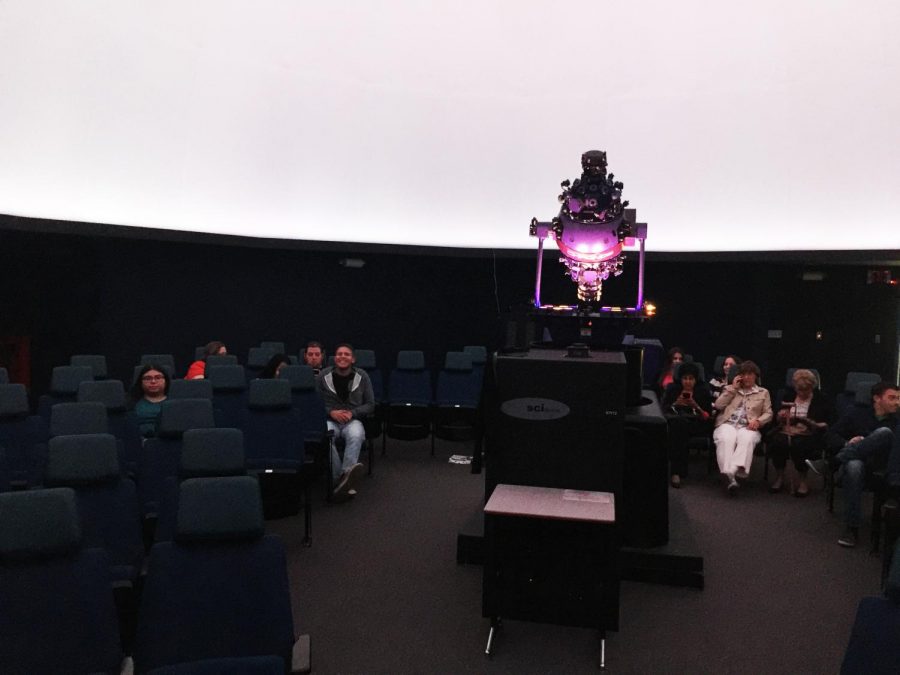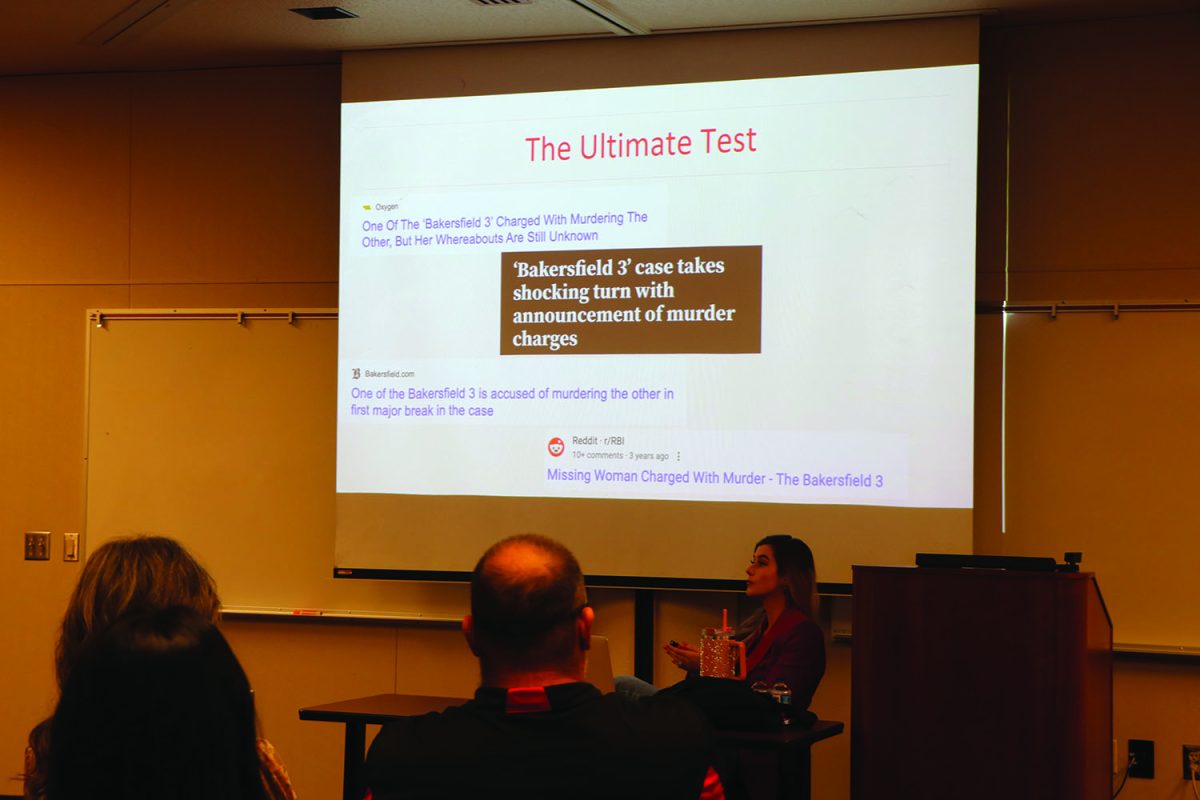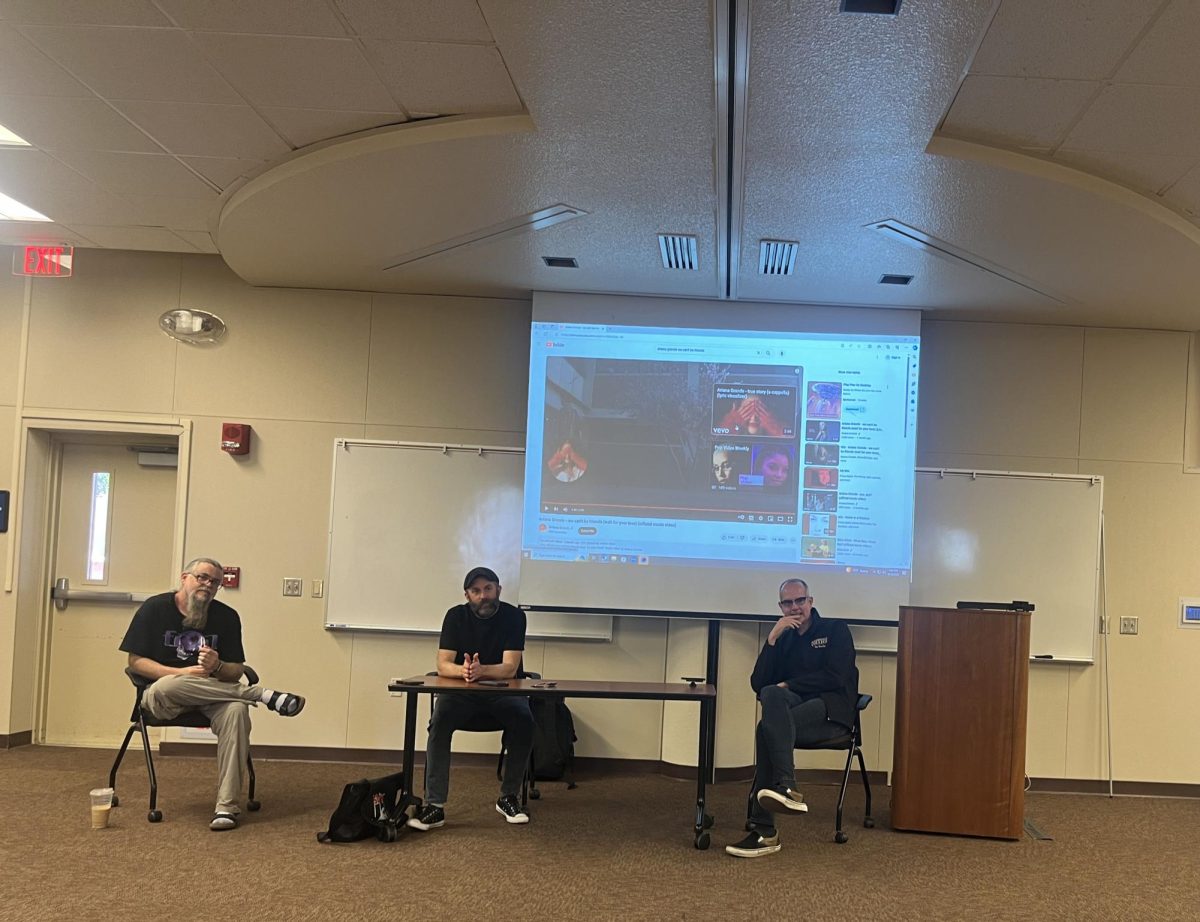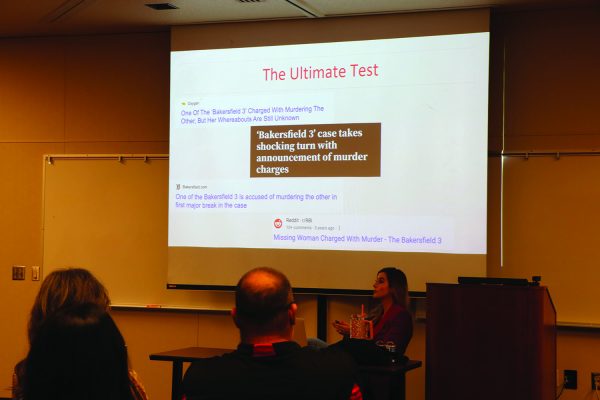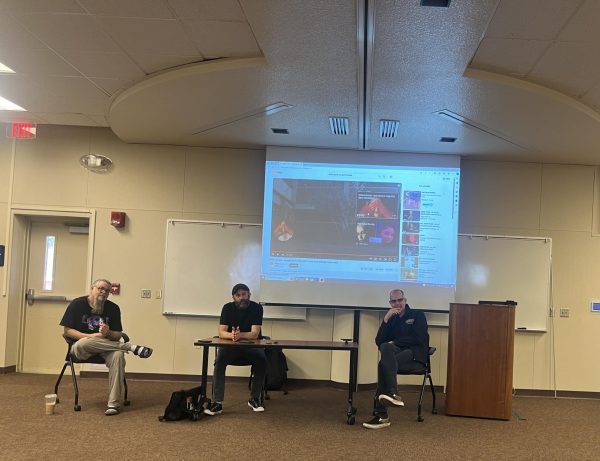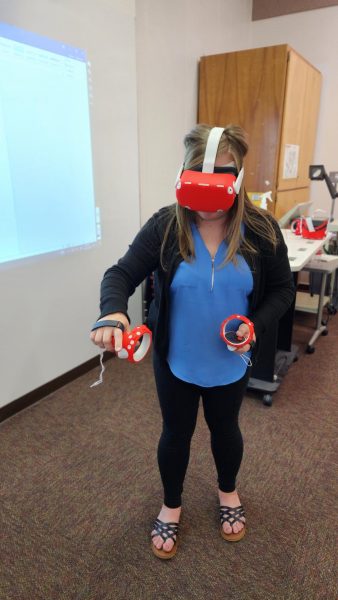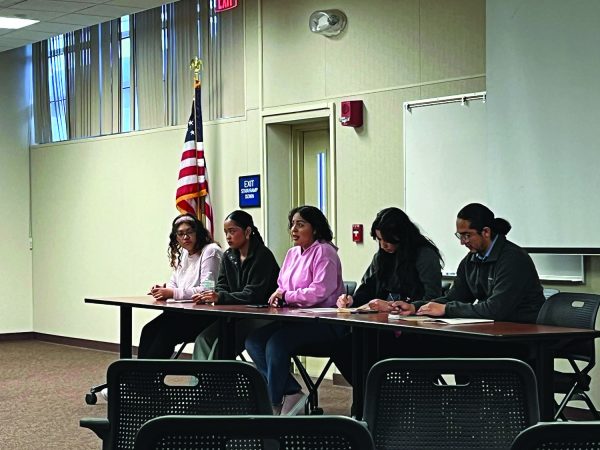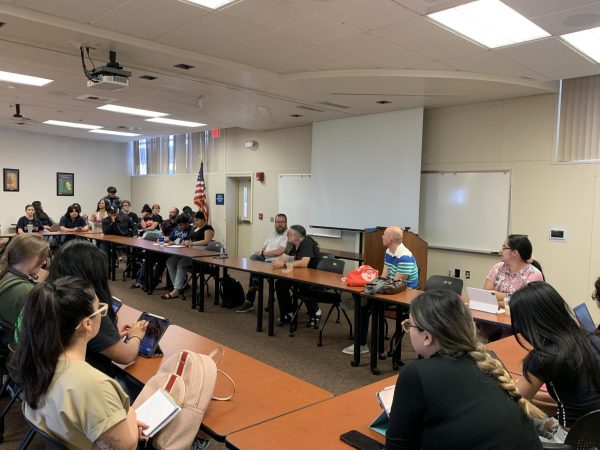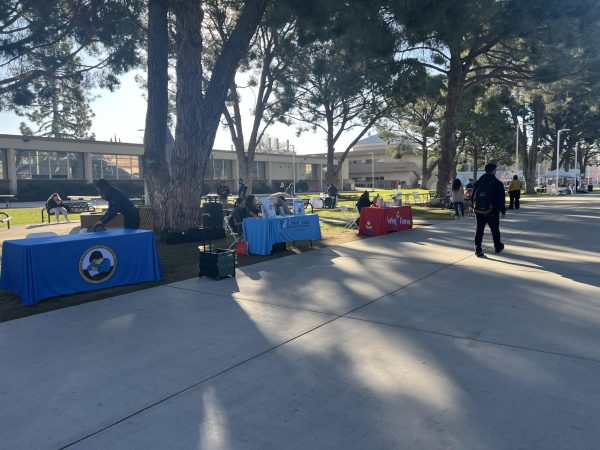Students explore the night sky from the planetarium
Film goers take their seats and wait for the presentation to begin.
October 23, 2017
The William M Thomas Planetarium at Bakersfield College featured “Earthquake: Evidence of a Restless Planet,” a film documentary produced by California Academy of Sciences, and provided courtesy of a grant by Chevron, on Oct. 5.
The one-hour planetarium night sky journey and earthquake documentary was projected from a state-of-the-art Goto Chronos star projector with a SciDome all-dome video system by Spitz, under a 36-foot white screened dome.
John Menzies, Professor of Geography and the Assistant Director of the planetarium, was the program’s guide. The star gazing experience included a visual of the night sky from Bakersfield’s perspective, which included some of the major constellations of stars from Ursa Major, Polaris, and Ursa Minor to Andromeda, the North Star and the Milky Way.
According to Menzies, one particular star, which is difficult for many viewers, even astronomers to see, due to its faintness, requires averted vision, a technique which Menzies said involves looking a little off to the side of the star in order to get a better view of how bright it is. He said that the Adronmenda Galaxy, seen as a “fuzzy patch,” in the night’s sky, is on a collision course with earth’s galaxy, the Milky Way, but it won’t collide for another 4.5 billion years.
The Milky Way, a band of suffused soft smoky light, got its moniker because the band is said to resemble the traced pathway of milk spilled out over the universe, according to Menzies. In order to get a better view of the Milky Way, and stars in general, he suggested that stargazers “get out of the city and camp on a mountain,” to get away from light pollution which affects the clarity and “drowns out a lot of stars.”
The informational stargazing segment of the program was followed by a 23 minute film on how the influence of earthquakes has dramatically changed the planet’s landscape over millions of years.
The earthquake documentary took the viewers from the shorelines of California, to the San Andreas fault, up to an aerial view, which glided down through and into the San Francisco Bay to the streets where they experienced the earthquake that occurred in 1906 and killed over 30,000 people. Viewers then traveled across time and across the globe to other significant earthquakes that shook and tore the continent apart.
BC graduate Liseth Arreguin, 28, enjoyed the film and said it gave her “a perspective on how the world is connected and how what happens on one end of the earth impacts the other side.”
She also said that the film gave her the sensation of “floating.”
Throughout the month of October and November, other film documentaries are scheduled to be played at the planetarium. Visit the Bakersfield College website or Renegade Rip website for additional information about these documentaries, dates, and times.


